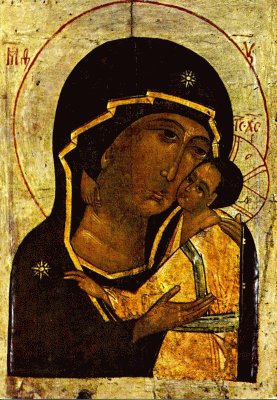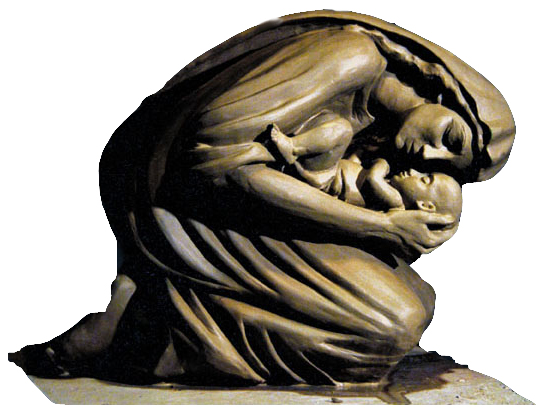Today is All Saints' Day when the Church commemorates all saints, whether known or unknown. It is a Holy Day of Obligation, except this year when it falls on a Saturday. Go figure!
I repost this for today's feast of All Saints' Day because I simply love this excerpt from The Seven Storey Mountain ... and the meditation still holds true for me.
“What you should say”– Lax told me — ”what you should say is that you want to be a saint.”
A saint! The thought struck me as a little weird. I said: “How do you expect me to become a saint?”
“By wanting to,” said Lax, simply.
“I can’t be a saint,” I said, “I can’t be a saint.” And my mind darkened with a confusion of realities and unrealities: the knowledge of my own sins, and the false humility which makes men say that they cannot do the things that they must do, cannot reach the level that they must reach: the cowardice that says: “I am satisfied to save my soul, to keep out of mortal sin,” but which means, by those words: “I do not want to give up my sins and my attachments.”
Lax said: “All that is necessary to be a saint is to want to be one. Don’t you believe that God will make you what He created you to be, if you will consent to let him do it? All you have to do is desire it.”
Thomas Merton, The Seven Storey Mountain
This kept returning to my mind after I read it.
Yes, the
goal is to get to Heaven, but didn't I expect a stopover in Purgatory? Didn't everyone I talked to laugh somewhat about how long they'd be stuck there too?
It struck me that what this attitude reflects is not aiming for Heaven, but
settling for Purgatory. We should be happy that Purgatory is there like the net under tightrope walkers, to catch us if we fall short. But we should be aiming for, and expecting, to achieve our greatest potential ... that for which God created each and every one of us. That with His grace and our cooperation we can each be a saint.
St. Teresa of Avila crossed my mind. St. John of the Cross. You know where I'm going with this right? Saint Teresa of Calcutta
(a.k.a. Mother Teresa). The dark night of the soul. I know that these saints thought it worthwhile but I'm not into signing up for that duty.
I then thought of my grandfather, Raymond. A wonderful man, always happy and cheerful, willing to work hard to help anyone who needed it ... an anonymous saint to the Church but one to all who knew him. No dark night of the soul there. Yet, I'm sure he skipped right over Purgatory. Would I be willing to follow his example? Of course.
I thought of my patron,
Saint Martha (you know, of the "Mary has chosen the better part" story). The last time we see her serving is notably different from the first. Mary is washing Jesus' feet and Martha is mentioned as serving in the background. To me that says she has learned the lesson Jesus gave her about "the better part." Would I be willing to follow her example? Natch.
My glance fell on a book I recently received about
Solanus Casey, a favorite of mine because he was a humble porter whose holiness shown through to the people of Detroit. Similar to St. John Vianney, another favorite of mine
(yes, I have lots of favorites), in that both found studies difficult and consequently were not thought much of by their orders.
Of course, it was borne in upon me yet again that we have so many examples of all the different sorts of saints God makes to suit each time and place. Why I would feel that it necessarily requires a "dark night of the soul" I don't know ... how silly of me!
The culmination of all this thinking took place last night while I was waiting for the Vigil Mass to begin. I was saying the rosary
(more about that in another post) and kept coming back to the subject of saints. I got a growing feeling of excitement and anticipation at the unknown future when we completely give ourselves over to God ... when we
desire to become a saint. Nothing new here intellectually that's sure, but for me it is that sense of possibilities, of waiting for a surprise ... and that is always what we discover when God is involved.
I'm not settling any more. I'm aiming higher.
Isn't this gorgeous? There's more where that came from ... Recta Ratio.



























.jpg)